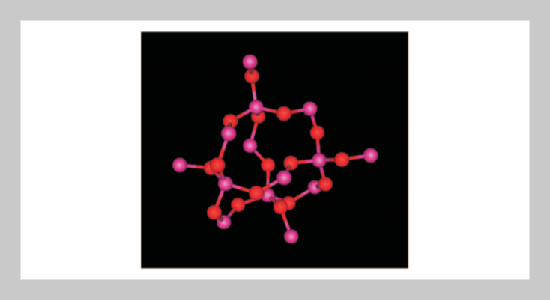REFERENCES
- [1] Wessling, S., Kuenzer, C., Kessels, W. and Wuttke, W. M., “Numerical Modeling for Analyzing Thermal Surface Anomalies Induced by Underground Coal Fires,” Int J Coal Geol, Vol. 74, pp. 175184 (2008). doi: 10. 1016/j.coal.2007.12.005
- [2] Wolf, K. H. and Bruining, H., “Modelling the Interaction between Underground Coal Fires and their Roof Rocks,” Fuel, Vol. 86, pp. 27612777 (2007). doi: 10. 1016/j.fuel.2007.03.009
- [3] Liu, L. and Zhou, F. B., “A Comprehensive Hazard Evaluation System for Spontaneous Combustion of Coal in Underground Mining,” Int J Coal Geol, Vol. 82, pp. 2736 (2010). doi: 10.1016/j.coal.2010.01.014
- [4] Finkelman, R., “Potential Health Impacts of Burning Coal Beds and Waste Banks,” Int J Coal Geol, Vol. 59, pp. 1924 (2004). doi: 10.1016/j.coal.2003.11.002
- [5] Stracher, G. and Taylor, T., “Coal Fires Burning Out of Control Around the World: Thermodynamic Recipe for Environmental Catastrophe,” Int J Coal Geol, Vol. 59, pp. 717 (2004). doi: 10.1016/j.coal.2003.03.002
- [6] Pone, J., Hein, K., Stracher, G., Annegarn, H., Finkleman, R., Blake, D., et al., “The Spontaneous Combustion of Coal and its By-products in the Witbank and Sasolburg Coalfields of South Africa,” Int J Coal Geol, Vol. 72, pp. 124140 (2007). doi: 10.1016/ j.coal.2007.01.001
- [7] Cai, Z. and Wei, J., “Coalfield Fire Fighting in Xinjiang: Successes and Challenges,” Proceedings of the Second International Conference on Coal Fire Research, Berlin, pp. 1921 (2010).
- [8] Gielisch, H. and Kayser, J., “Coal Fire Scenarios Experiences from Fieldwork in India,” Proceedings of the Second International Conference on Coal Fire Research, Berlin, pp. 285294 (2010).
- [9] Wu, Z. H. and Wu, G. G., “The Advance Technology for Preventing Spontaneous Combustion of Coal,” Energ. Technol. Manage, pp. 4951 (2010) (Chinese).
- [10] Liu, A. H., Cai, K. X. and Guo, D., “Study and Application of Plasticity Plaster-Slurry for Preventing Coal Spontaneous Combustion,” Journal of Coal Sci. Eng, Vol. 9, pp. 7478 (2003).
- [11] Adamus, A., “Technical Note: Review of Nitrogen as an Inert Gas in Underground Mines,” Journal of the Mine Ventilatio, Vol. 54, pp. 6061 (2001).
- [12] Gary, J., “Colaizzi Prevention, Control and/or Extinguishment of Coal Seam Fires Using Cellular Grout,” Int. J. Coal Geol, pp. 7581 (2004).
- [13] Wang, D. M., “Mine Fire Extinguishing TechnologyThree-Phase Foam,” Coal Mine Safety, Vol. 35, pp. 1618 (2004) (Chinese).
- [14] Zhao, J. T. and Xue, L. L., “Research on Technology for Preventing Spontaneous Combustion of Coal,” Advanced Materials Research, pp. 524527 (2012). doi: 10.4028/www.scientific.net/AMR.524-527.677
- [15] Ren, W., “Mechanism Discuss of BRC Inhibitor AntiFire,” Safety in Coal Mines, Vol. 29, pp. 3840 (1998) (Chinese).
- [16] Brenner, G., Pickenacker, K. and Pickenacker, O., “Numerical and Experimental Investigation of Matrix Stabilized Methane/air Combustion in Porous Inert Media,” Combust. Flame, Vol. 123, pp. 210213 (2000). doi: 10.1016/S0010-2180(00)00163-2
- [17] Zhou, X. M., Zhang, Y. F. and Liao, G. X., “Binary Fire-Extinguishing Agent Composed of Halocarbons and Inert Gases,” Prog. Nat. Sci., Vol. 16, pp. 292296 (2006).
- [18] Xu, J. C., Zhang, X. H. and Wen, H., Spontaneous Combustion of Coal Seam and Colloid Fire Extinguishing Theory and Technology, Coal Industry Press: Beijing (2003) (Chinese).
- [19] Xu, J. C. and Ma, L., “The Application of Fly Ash Composite Gel Fire-Fighting Technology in Spontaneous Combustion Fire Area,” Coal Sci. Technol., Vol. 32, pp. 2426 (2004) (Chinese).
- [20] Wessling, S., Kessels, W., Schmidt, M. and Krause, U., “Investigating Dynamic Underground Coal Fires by Means of Numerical Simulation,” Geophys. J. Int., Vol. 172, pp. 439454 (2008). doi: 10.1111/j.1365- 246X.2007.03568.x
- [21] He, X. Q. and Song, L., “Status and Future Tasks of Coal Mining Safety in China,” Saf. Sci., Vol. 50, pp. 894898 (2011). doi: 10.1016/j.ssci.2011.08.012
- [22] Hu, S. R. and Jiang, D. C., “The Disaster of Spontaneous Combustion of Coal and Countermeasures for Prevention,” Chin. Journal of Geol. Hazard Ctrl., Vol. 11, pp. 6971 (2011).
- [23] Zhu, J. F., He, N. and Li, D. J., “The Relationship between Oxygen Consumption Rate and Temperature during Coal Spontaneous Combustion,” Saf. Sci., Vol. 4, pp. 842845 (2012). doi: 10.1016/j.ssci.2011.08.023
- [24] Xu, J. C., Ma, L. and Wen, H., “Applying Fire Extinguishing Technique of Fly Ash Composite Gel to Harness Large-Area Spontaneous Combustion,” Min. Safety E. P., Vol. 31, pp. 1516 (2004).
















